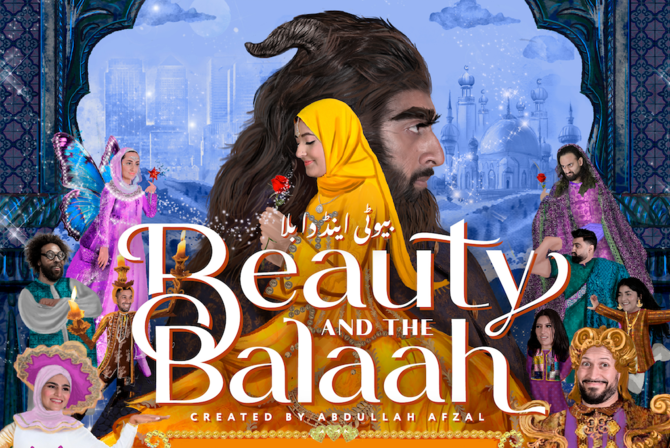LONDON: International humanitarian charity Penny Appeal has announced this year’s “Great Muslim Panto,” promising audiences across Britain “a heartwarming and culturally rich” production.
“’Beauty and the Balaah’ is a captivating Muslim Panto with a unique Halal twist on Disney’s timeless classic, ‘Beauty and the Beast’,” the UK-based organization said in a statement.
“This extraordinary rendition seamlessly weaves South Asian and Muslim references into the beloved story, ensuring it’s inclusive and relatable to a diverse audience while opening doors to the rich tapestry of Muslim culture,” it added.
Set in a picturesque village where tradition and modernity harmoniously coexist, “Beauty and the Balaah” introduces audiences to a spirited young Hijabi girl named Aisha.
“This heartwarming tale beautifully integrates cultural nuances from the Muslim world, creating a one-of-a-kind blend of tradition and progress,” Penny Appeal said.
The storyline follows the journey of a young prince, Balaah, who is transformed into a hideous creature by the benevolent Fairy Noor after falling prey to cruelty and greed under the influence of an evil wizard.
To break the curse and regain his human form, Balaah embarks on a quest to learn the true meaning of love and kindness. When Aisha courageously enters his enchanted castle, she discovers the goodness that lies beneath his monstrous exterior, demonstrating that beauty is more than skin deep.
“The Muslim Panto proudly announces that the lead character, Aisha, will be brought to life by the immensely talented Iman Akhtar, hailing from Glasgow,” the show said.
This year’s production is written and produced by the British-Pakistani actor and writer Abdullah Afzal, known for his contributions to the BBC’s “Citizen Khan” and his previous work on the Muslim Panto, including “Cinder’Aliyah,” which he also wrote as a take on Disney’s “Cinderella.”
“’Beauty and the Balaah’ isn’t just about entertainment; it’s about making a positive impact on the world,” Penny Appeal said.
Proceeds from all the performances will go toward supporting the charity’s “Winter Aid” appeal, a charitable initiative aimed at providing essential support to those in need in areas including Pakistan, Afghanistan and Palestine.
“By attending the Muslim Panto, you’ll be a part of this noble cause, bringing warmth and assistance to vulnerable communities,” Penny Appeal said.
The pantomime will embark on a nationwide tour starting in early December, with up to 60 performances scheduled across the UK through January.
“Following the enormous success of the previous production, “Cinder’Aliyah,” which sold out within 48 hours of ticket sales opening, this new production is poised to captivate audiences with its unique blend of comedy, enchantment, and profound cultural resonance.”



























